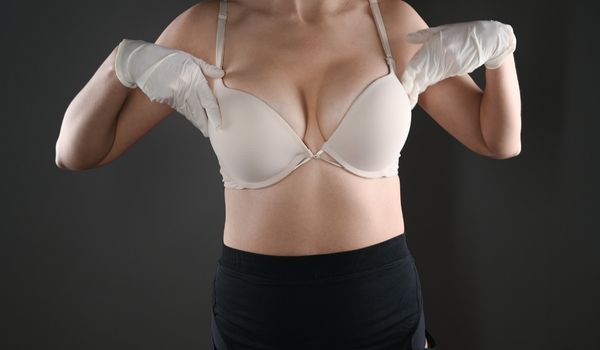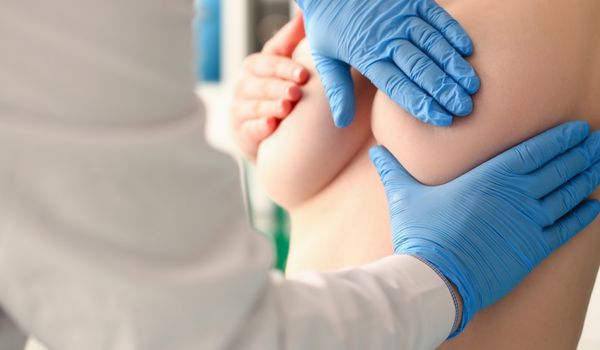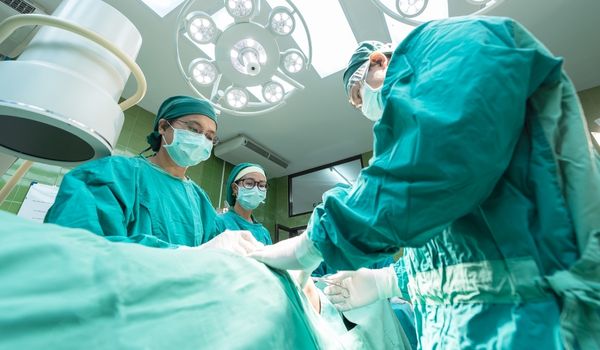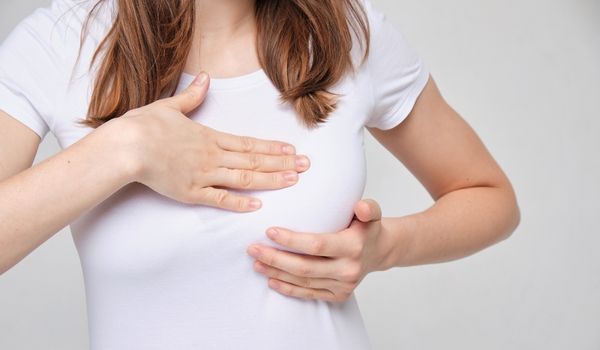
Symptoms, Causes and Treatment of Capsular Contracture
Capsular contracture is characterised by a hard capsule of scar tissue that tightens around the implant after breast augmentation or breast reconstruction surgery.
The implant capsular contracture may be mild and without symptoms or severe and can even cause an unnatural breast appearance. The treatment of severe capsular contracture involves the surgical removal of the hard capsule and the implants (with or without replacement of the implants).
So far, the occurrence of breast implant capsular contracture is primarily linked to the subglandular (above the muscle) placement of breast implants. Other risk factors include infection, haematoma, seroma, and whether the patient is getting a breast augmentation or reconstruction surgery.
Find out more about capsular contracture, why it happens, its treatment, and what you can do to avoid it.
What Is Capsular Contracture?
This condition occurs when a capsule of scar tissue hardens and tightens around a breast implant. It’s a potential complication after breast implant surgery. It’s also one of the most common reasons for breast revision surgery.
The appearance of the capsular contracture can range from normal-looking to severely misshapen.
Using the Baker classification system, implant contracture can be divided into four classes depending on severity:
- Grade I: despite the formation of scar tissue around the implant, the breast looks and feels normal
- Grade II: the breast looks natural but feels somehow firm to the touch
- Grade III: the breast feels hard to the touch and looks somehow misshapen (a bit too rounded or tilted upwards, and the nipples look abnormal)
- Grade IV: similar to grade III, a breast with grade IV contracture looks misshapen and feels hard. Patients with severe grade IV breast implant contracture also experience soreness and pain in their breasts
Capsular contracture usually occurs one or two years after breast augmentation surgery. In other cases, it can take several years to develop.
What Causes Capsular Contracture?
Capsular contracture occurs because the body’s immune system forms scar tissue around the breast implant. Scar tissue formation is a natural part of the healing process.
During your recovery from breast implant surgery, your body repairs the injured tissues, replaces missing tissue, and deposits collagen into the wound to stimulate new tissue growth.
The collagen deposit leads to scar tissue formation – a natural part of all wound healing.
Moreover, the body recognises the implants as “foreign objects” – they’re not a natural part of the body. Therefore, the body tries to defend itself against the foreign object by isolating it from the rest of the body.
As a result, the body forms additional scar tissue around the breast implant to create a barrier between it and the natural breast tissue. The capsule of scar tissue around the implant can be beneficial if it doesn’t become too hard – it can hold the implant in place and prevent it from slipping.
On the other hand, if the body overreacts to the presence of the implant, it deposits large amounts of collagen, which leads to the formation of excessive scar tissue.
If the scar tissue capsule becomes unusually hard, it begins to contract around the implant. That leads to breast deformity and pain.
Signs of Capsular Contracture
The most common symptoms of breast capsular contracture after breast reconstruction or augmentation surgery include:
- Breasts that feel firm and tight (this is one of the early signs of capsular contracture)
- Breasts that look overly rounded or ball-like
- Breast implant rippling (the edges of the breast implant become visible)
- Misshapen or high-riding breasts
- Pain or discomfort in the breast
Breast implants with mild capsular contractures can be asymptomatic. They look and feel normal and don’t cause any medical concerns.
As the severity of the contracture increases, the symptoms will become more obvious and bothersome.
Risk Factors
Some factors can increase the risk of developing this condition, such as:
- Implant type: some studies suggest that implants with a textured surface are more likely to cause breast contracture than smooth-surfaced breast implants. On the other hand, other studies suggest the opposite
- Implant placement: implants positioned over the chest muscle (subglandular placement) have a higher risk of this type of contracture than submuscular implants
- Postoperative infections: a breast infection after implant surgery can further trigger the immune system and increase inflammation levels. As a result, more scar tissue is produced, which increases the risk
- Other postoperative complications: researchers reported that the incidence of implant contracture was higher in patients with post-surgical haematoma or seroma
- Type of implant breast surgery: a 10-year study published in 2015 reported that more cases of capsular contracture occurred after implant-based breast reconstruction surgeries than after breast augmentation surgeries
- Genetics: each patient’s body has a unique healing process and will respond to the implants differently. Some immune systems overreact to implants and produce excessive scar tissue, while others don’t
How Is Capsular Contracture Diagnosed?
The diagnosis of capsular contracture usually depends on the clinical symptoms, including whether the breast is firm, looks misshapen, or feels painful.
Magnetic resonance imaging (MRI) can further confirm a breast implant contracture diagnosis and detect asymptomatic cases.
How to Treat Capsular Contracture?
Not all cases of implant capsular contracture require treatment. Grade I capsular contractures are harmless and don’t affect the shape of the breast. Therefore, they don’t need treatment.
More severe degrees of capsular contracture can cause breast distortion and pain, which would require treatment.
1. Surgical treatment
Surgical treatment is recommended in case:
- The breast shape is distorted or deformed
- The implant gets pushed out of its natural position
- The breast becomes too hard
- The capsule of scar tissue around the implant is causing pain or discomfort
Revision surgery to correct implant capsular contracture includes the removal of breast implants and the hard capsule (capsulectomy). New implants can be inserted during the same surgery if the patient wants.
If the patient had subglandular implants during the first surgery, the surgeon usually changes the position of the implant during the second surgery. The implants are placed under the muscle to avoid a new capsular contracture.
Moreover, if the capsular contracture is accompanied by infection, the patient will also need antibiotic treatment.
2. Non-surgical treatment
The only effective treatment is implant removal and capsulectomy. However, surgeons are interested in finding non-surgical solutions to avoid risks and complications from a second operation.
Researchers conducted a systematic review of non-surgical treatments for capsular contracture. The review included studies on:
- Ultrasound treatment: studies done on patients in 1997 and 2001 investigated the efficiency of ultrasound waves in treating capsular contraction. Both studies reported improvements in capsular contracture following treatment with ultrasound wave therapy
- Diapulse therapy: one paper investigated the use of Diapulse therapy to eliminate capsular contracture. Diapulse therapy involves delivering non-thermal and high-power electromagnetic energy to the scar tissue
Although the study reported the complete elimination of the scar tissue capsules in 41 patients, no other studies have confirmed the effectiveness of Diapulse therapy.
- Flector Tissugel patch: Flector patches contain Diclofenac Epolamine, a nonsteroidal anti-inflammatory drug (NSAID). In one study, 68% of patients showed improvement in their capsular contracture after using Flector Tissugel patches on their breasts
- Pirfenidone prolonged-release tablets: Pirfenidone is a drug that blocks the action of substances in the body that are involved in causing fibrosis. 17 patients took 3 Pirfenidone prolonged-release tablets daily for six months. At the end of their treatment, no sign of capsular contracture remained
- Intracapsular injections: researchers tried treating capsular contracture with ultrasound-guided steroid injections. Intracapsular steroid injections resolved the capsular contracture in half of the patients
Nevertheless, there isn’t enough scientific evidence or research that supports the efficacy or safety of these non-surgical treatments.
How to Avoid Capsular Contracture?
The most effective way to avoid this condition is by getting under-the-muscle breast implants rather than above-the-muscle ones.
Some tips can help decrease your risk, such as:
- Lower your risk of postoperative complications: smoking, excessive physical activity, and poor wound care can increase your risk of post-op complications such as infection, haematoma, or seroma. These complications, in turn, increase your risk of implant capsular contracture. Avoid smoking and strenuous physical activity, and properly take care of your wounds after breast implant surgery to help prevent breast capsular contraction
- Follow up with your plastic surgeon: attend your post-surgical check-ups regularly. That helps your surgeon assess the condition of your breast implants and look for any concerns or signs of complications
- Breast massage: while the breast heals, gentle breast implant massages can help avoid the excessive hardening of scar tissue. Ask your surgeon for instructions on when and how to massage your breasts after breast implant surgery
It’s not possible to completely avoid this potential complication. Breast scar tissue formation is a natural part of the body’s healing process. Even with the most skilled surgeon and the best surgical techniques, it’s still possible to develop a hard mass of scar tissue around the implant.
Is This Condition Dangerous?
This is not a dangerous complication. In mild cases, scar tissue formation around the implant doesn’t cause any symptoms and doesn’t require treatment.
However, severe grades of capsular contracture can cause extreme breast deformation and pain. Even though this complication isn’t life-threatening, it would require surgical intervention to correct the aspect of the breasts.
Contact your plastic surgeon if you feel an unnatural hardening or distortion in your breasts after getting breast implants. The earlier you detect a capsular contracture, the better. Your plastic surgeon will look for and treat any underlying conditions causing capsular contraction, such as an infection, hematoma, or seroma.
Medical References about Capsular Contracture after Plastic Surgery
- Early onset of capsular contracture after breast augmentation with implant: report of two cases & review of literature – PMC
- Risk Factors for Capsular Contracture: A Retrospective Study in Immediate Reconstruction versus Delayed Reconstruction – PMC
- Nonsurgical treatment of capsular contracture: Review of clinical studies – PMC
- Why you should Quit Smoking before having your Plastic Surgery by Dr Michael Kernohan
- BREAST IMPLANTS Gallery by Dr Guy Watts
- Breast Implant Removal Sydney – Soliman Plastic Surgery
- Breast Implant Removal FAQs – Carmen Munteanu’s Best Answers
- Breast Implant Options – Dr Jake Lim – Plastic Surgeon
- Capsular Contracture – Causes and Prevention




